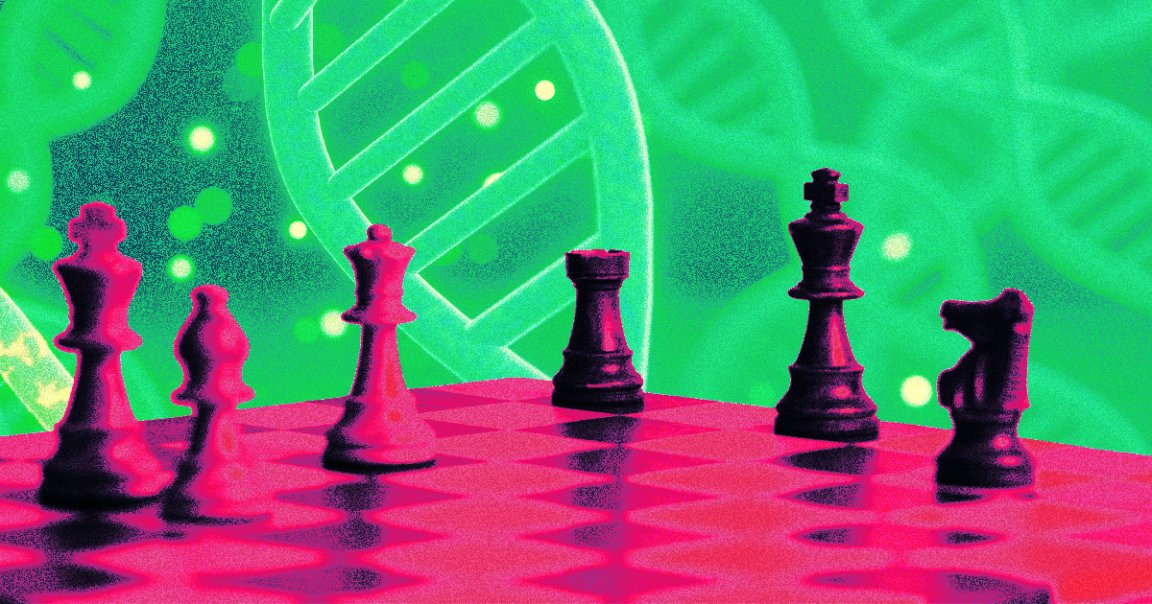
Nature’s Coders
It’s no secret that computers can smoke humans at chess. And now, as if to further mock our mere organic forms, scientists say they’ve created a computer made out of DNA that can play the board game — along with sudoku puzzles, for good measure.
The device can only solve chess and sudoku problems at a basic level, but these capabilities, detailed in a study published in the journal Nature Nanotechnology, mark a substantial leap toward powerful — and practical — DNA computing systems.
Part of the secret, the researchers say, was using a synthetic cellulose material to boost the amount of stored DNA strands, which also makes the files they encode more stable. And these strands can store a lot: about 1,000 terabytes per cubic centimeter, according to New Scientist.
“We found that this marriage of DNA with a synthetic material gives you a whole host of new practical capabilities that weren’t possible before,” study co-author Albert Keung, an associate professor of chemical and biomolecular engineering at North Carolina State University, told the magazine.
Command-Master
As the researchers explain, computer systems need to be able to store, read, write, and erase data, and execute functions.
Until now, DNA systems have been unable to do all of these at the same time. While they’re remarkably well suited for storage — this system is capable of storing files for 6,000 years when kept at 39 degrees Fahrenheit — their fatal flaw is that when you want to have them actually compute data, they destroy the files they access in the process.
The researchers’ solution, according to New Scientist, was using an enzyme to transcribe the DNA into RNA, which essentially creates a second copy of the data that can be used so the original is left untouched.
So far, the researchers have demonstrated that their DNA computer can solve simplified versions of chess and sudoku problems on a 3×3 grid. Per New Scientist, this works by loading all possible board configurations into the DNA strands, from which an enzyme narrows down the resulting RNA copies to solutions allowed by each games’ rules.
The work also demonstrated that the DNA computer can store three JPEG images, which were accessed repeatedly to prove their stability.
But the computer’s problem-solving capabilities is where it really shines, according to Keung, who said that scaled-up versions of DNA systems could eventually be cheaper and more efficient than the computers used to train AI models.
“Imagine… replacing much of that with low-cost, low-footprint, low-power, highly parallelized DNA-based molecular computation,” he told New Scientist.
More on computers: Scientists Connect 16 Mini Brains Made of Human Tissue to Create a “Living Computer”